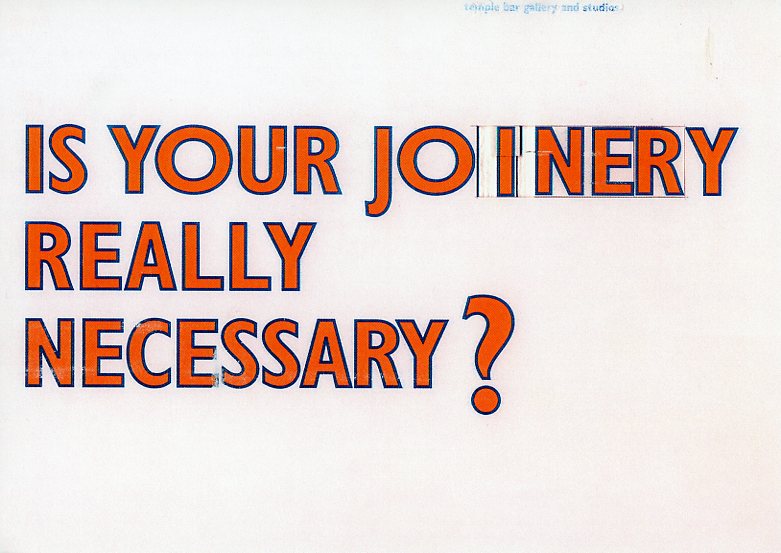
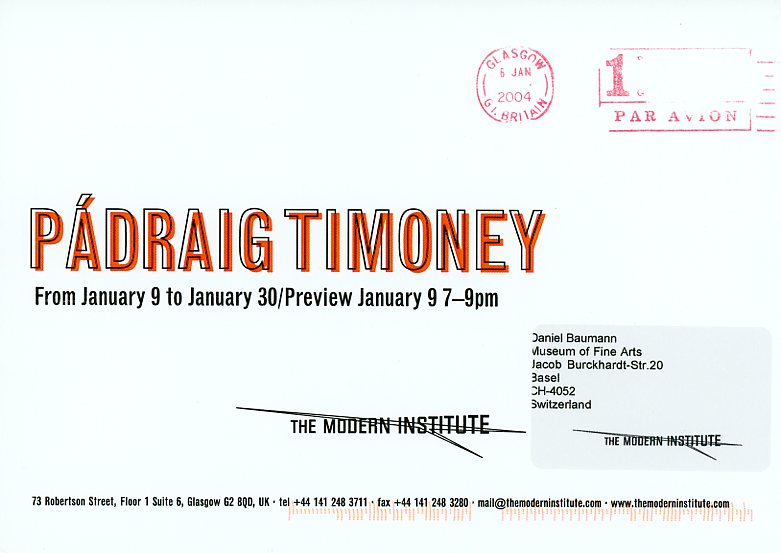
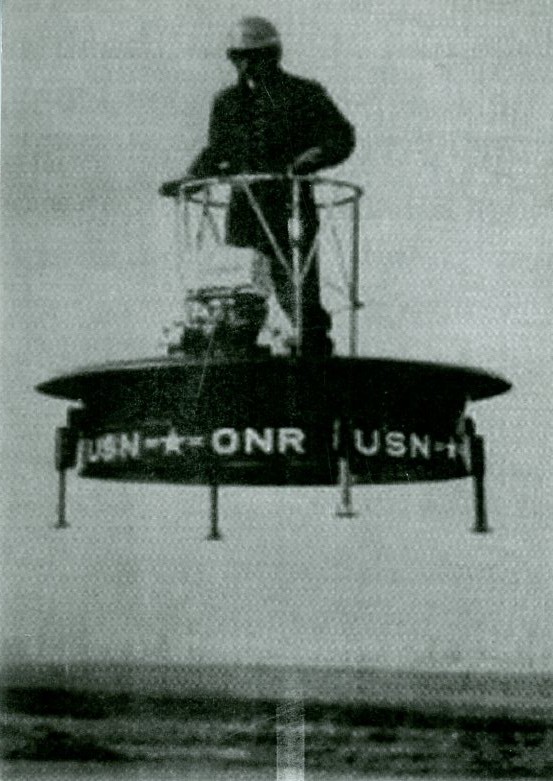
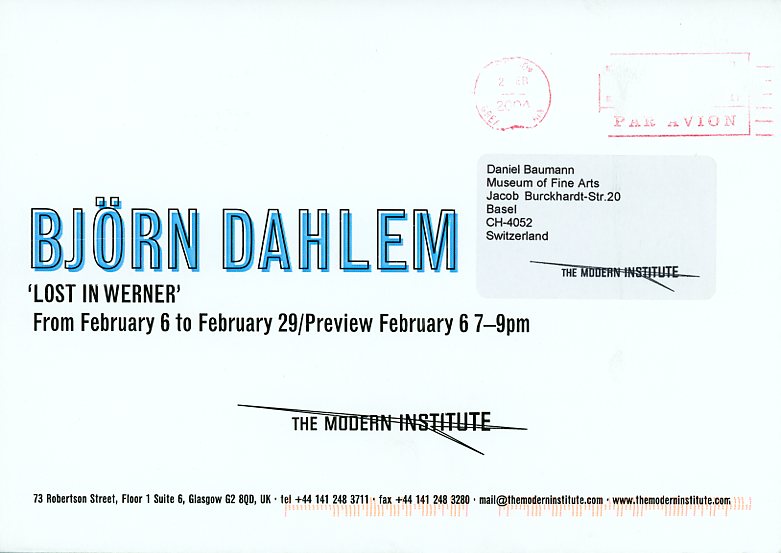
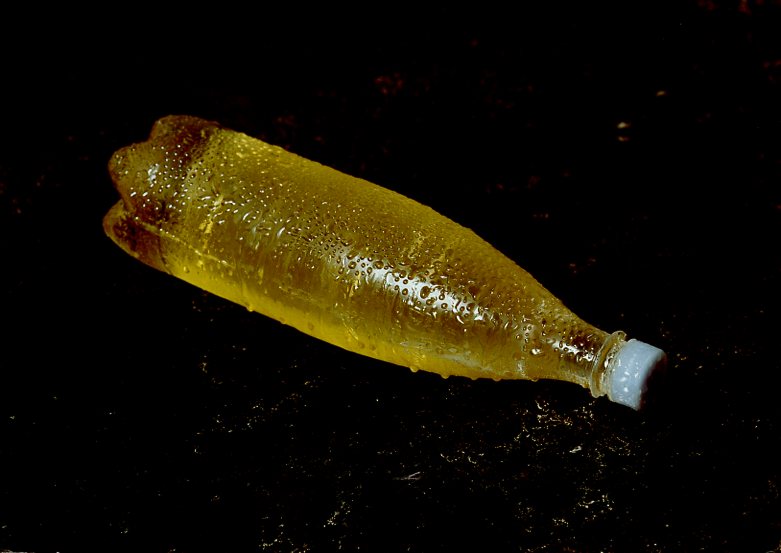
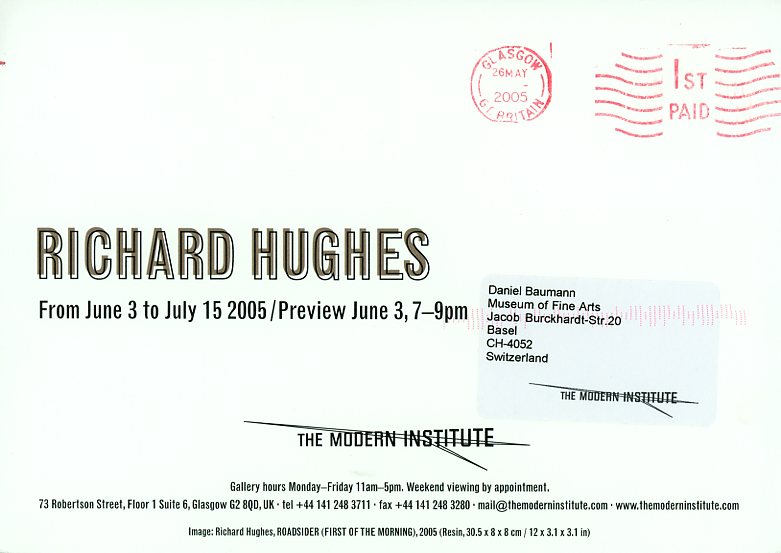
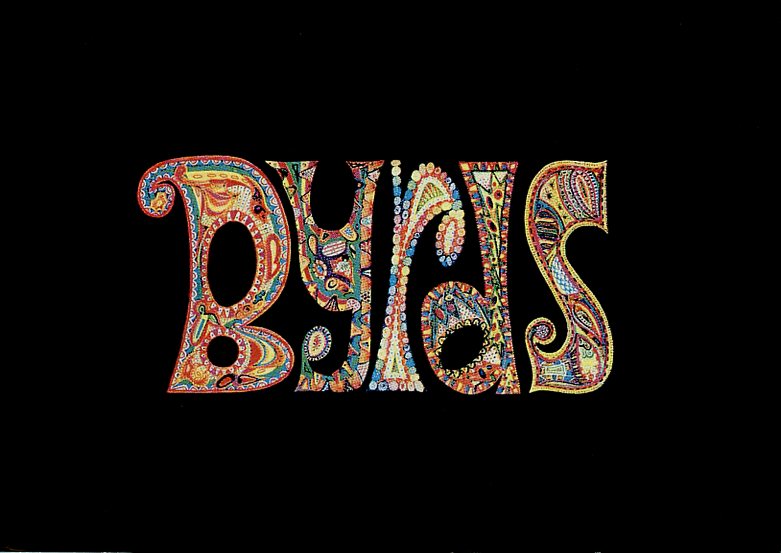
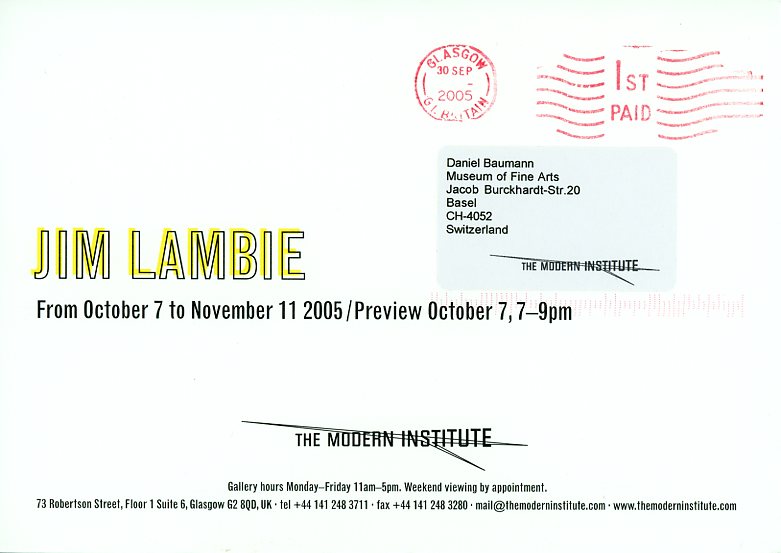
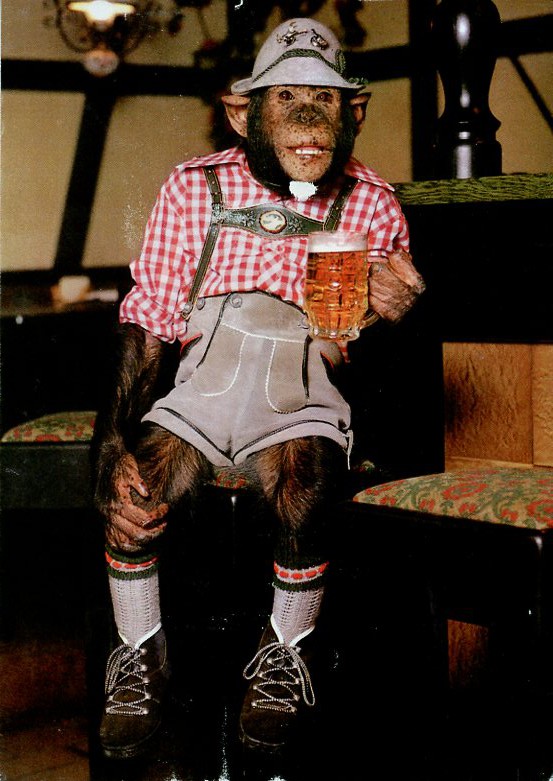
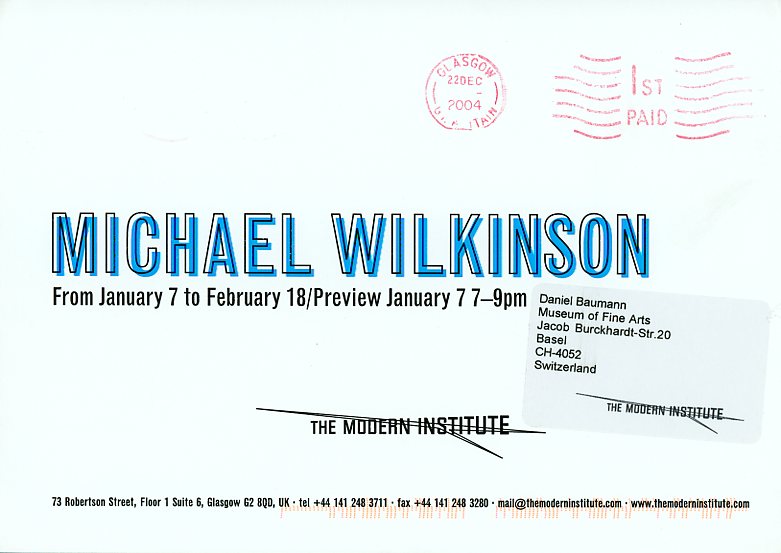
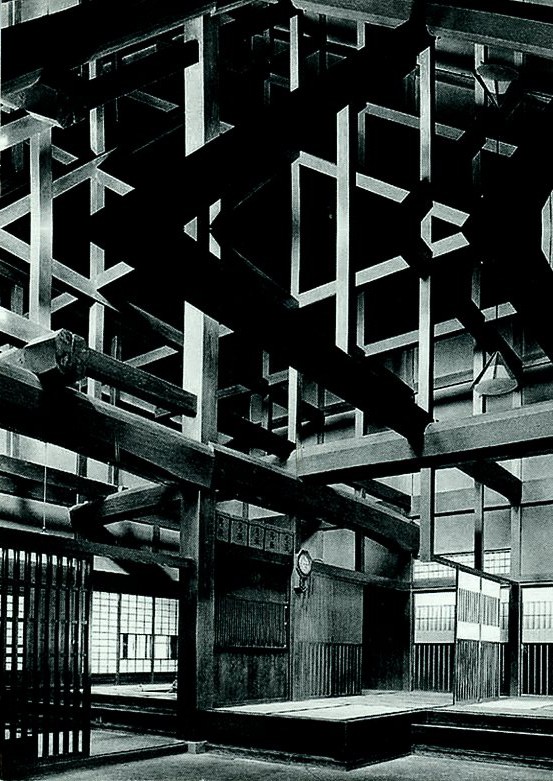
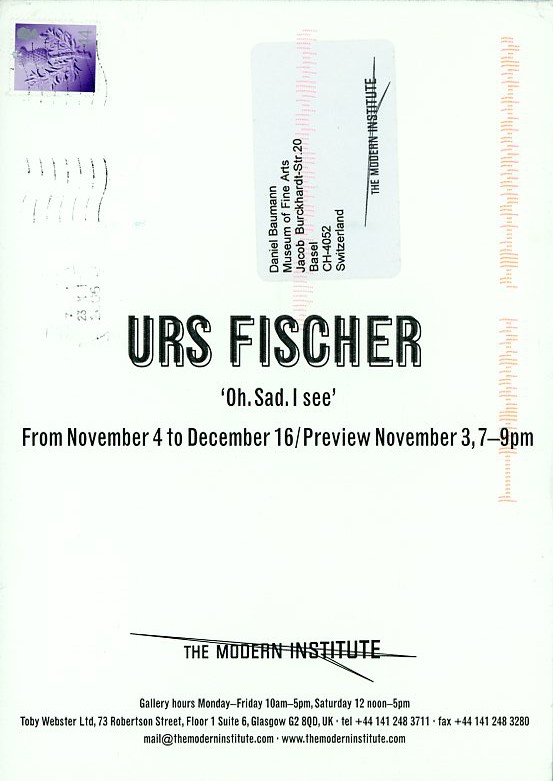
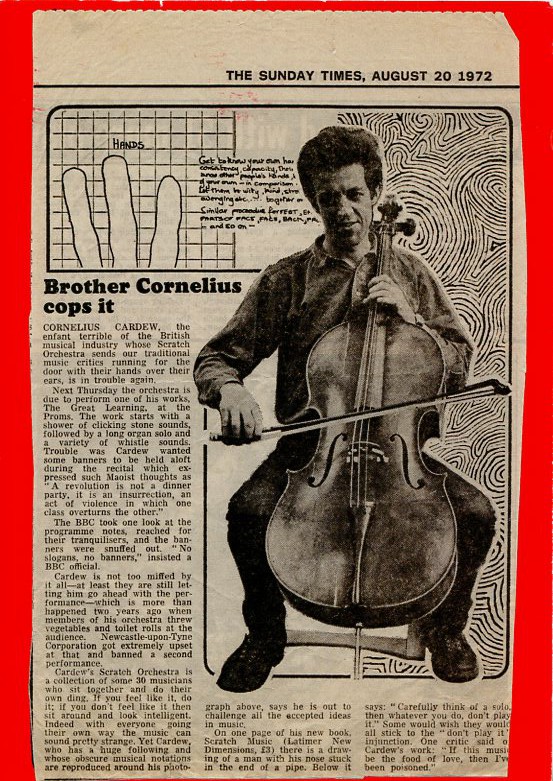
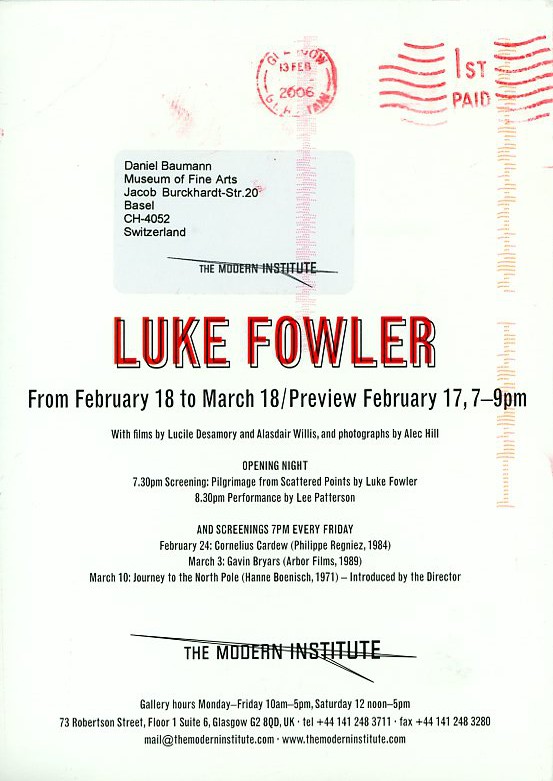
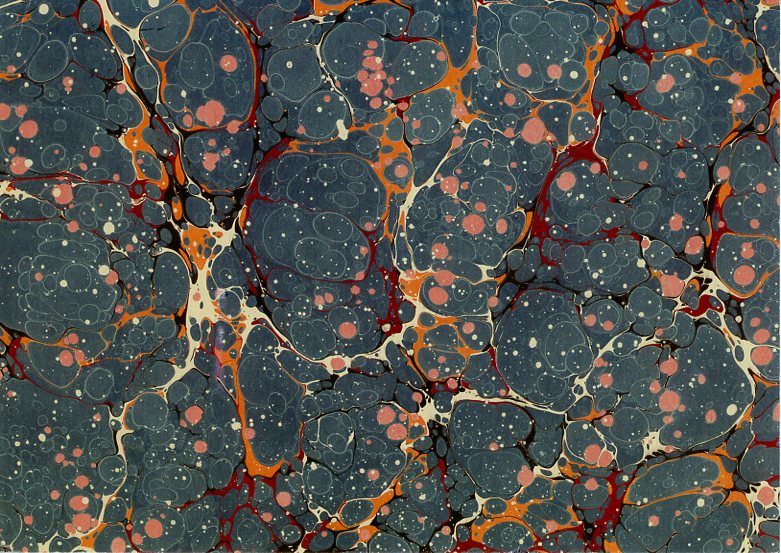
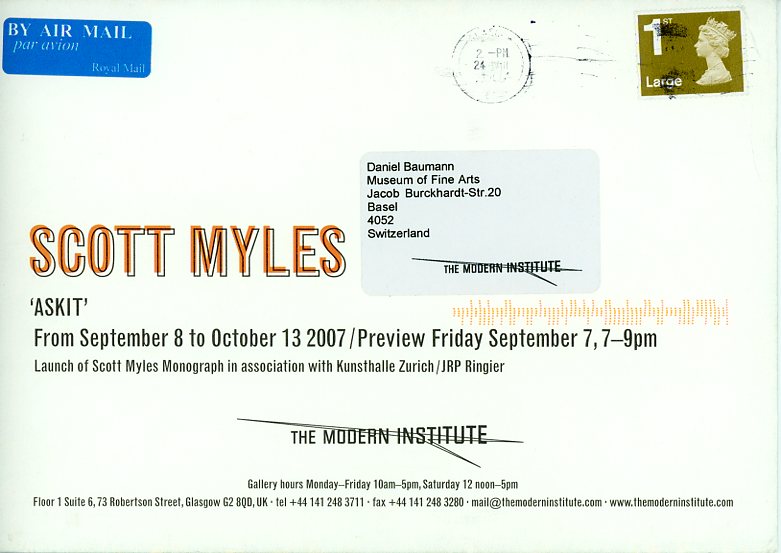
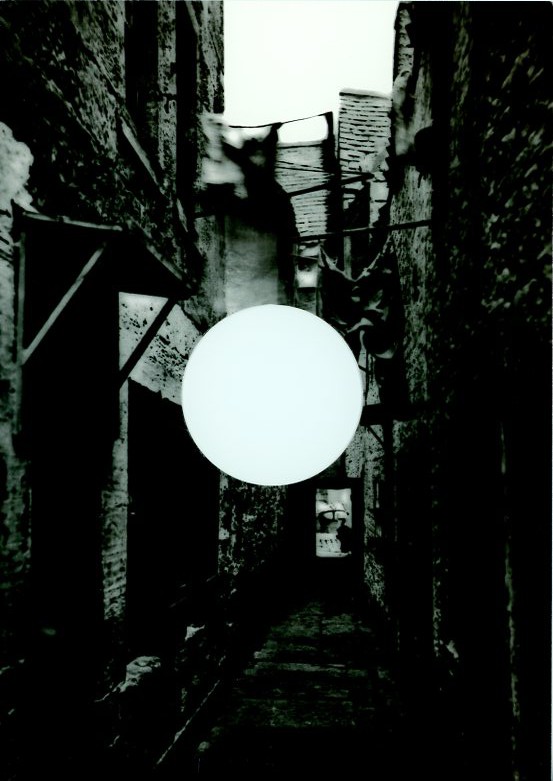
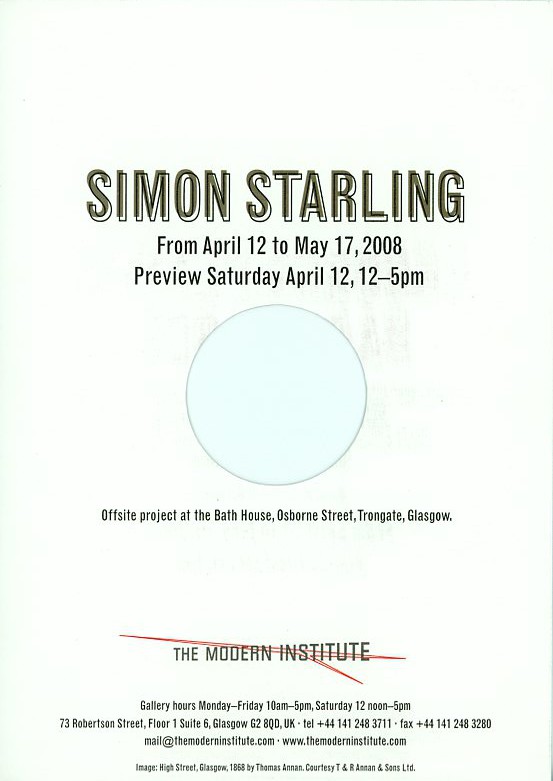
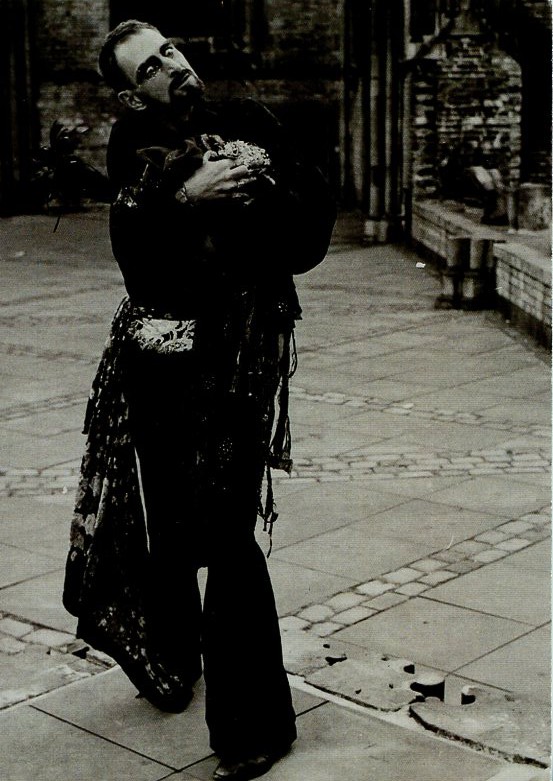
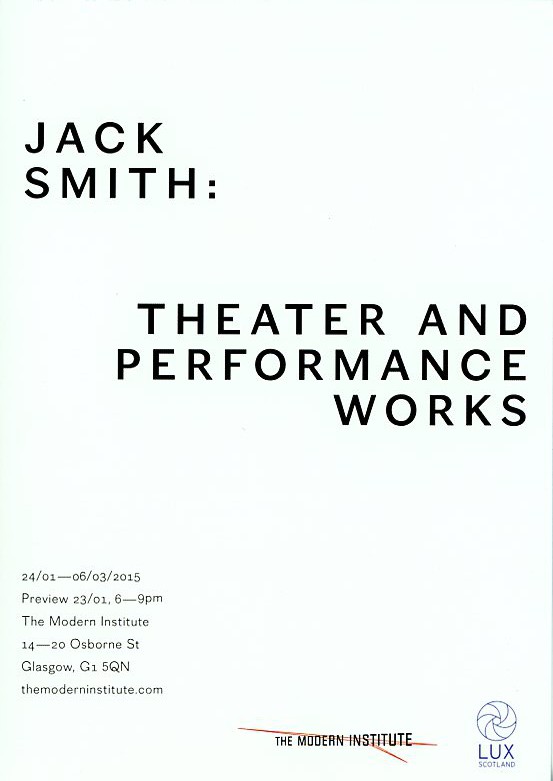
A small selection of the invitation cards by The Modern Institute. Toby Webster established The Modern Institute in 1997 in Glasgow, in partnership with former Tramway and current Van Abbemuseum Director, Charles Esche, and writer and curator Will Bradley. For many years, The Modern Institute sent out these very simple, great, sometimes funny, sometimes conceptual announcements. The gallery’s logo was designed by Toby Webster, so were the cards, and in the very beginning, he hand fed them through a riso machine. As Matthew Marks’ invitation cards, they deserve a retrospective or being part of a design museum. Or both.
As many of the new young galleries established in the mid to late nineties, The Modern Institute (est. 1997) used their invitation cards to highlight individuality and as an innovative form of (self-)branding. Invitation cards could become an art project, and a space where art may happen – and is distributed worldwide for free. A similar strategy was adopted by other young up-and-coming galleries such as neugerriemschneider, Berlin (est. 1994), Gavin Brown’s Enterprise, New York (1994-2020), CFA Contemporary Fine Arts, Berlin (est. 1992), The Modern Institute, Glasgow (est. 1997), Meyer Riegger Galerie (est. 1997 in Karlsruhe, since 2008 also in Berlin) or Eva Presenhuber (Galerie Walcheturm 1989-1998/Galerie Eva Presenhuber).
Simon Starling “Tabernas Desert Run”
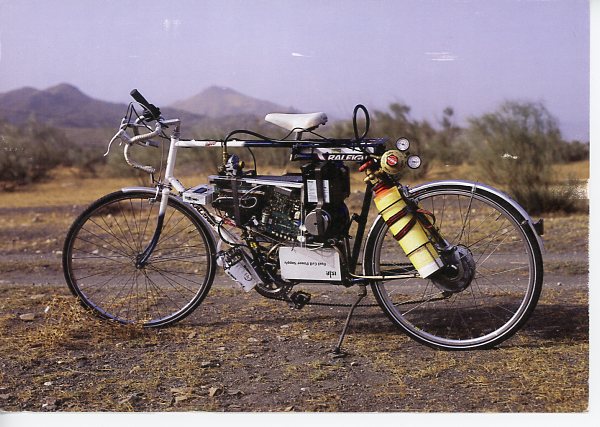

Starling crossed the Tabernas Desert in Spain on a bicycle powered by compressed hydrogen in September 2004. The only biproduct of the journey was water which was used to produce the cactus painting.
User comment: “Der Traum jedes Weltreisenden!” Speziell meines Cousins, welcher 2x per Velo den Planeten umradelte.” Beat
Jorge Pardo, design for Gallery neugerriemschneider, Berlin, part 2
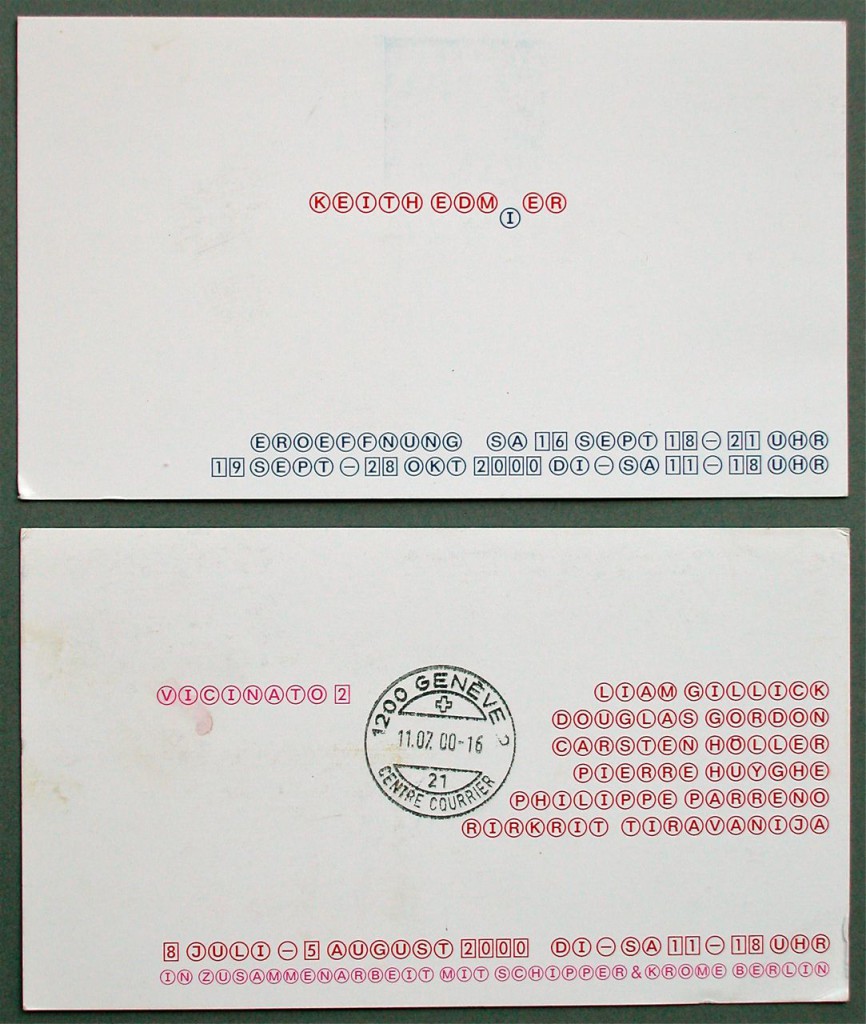
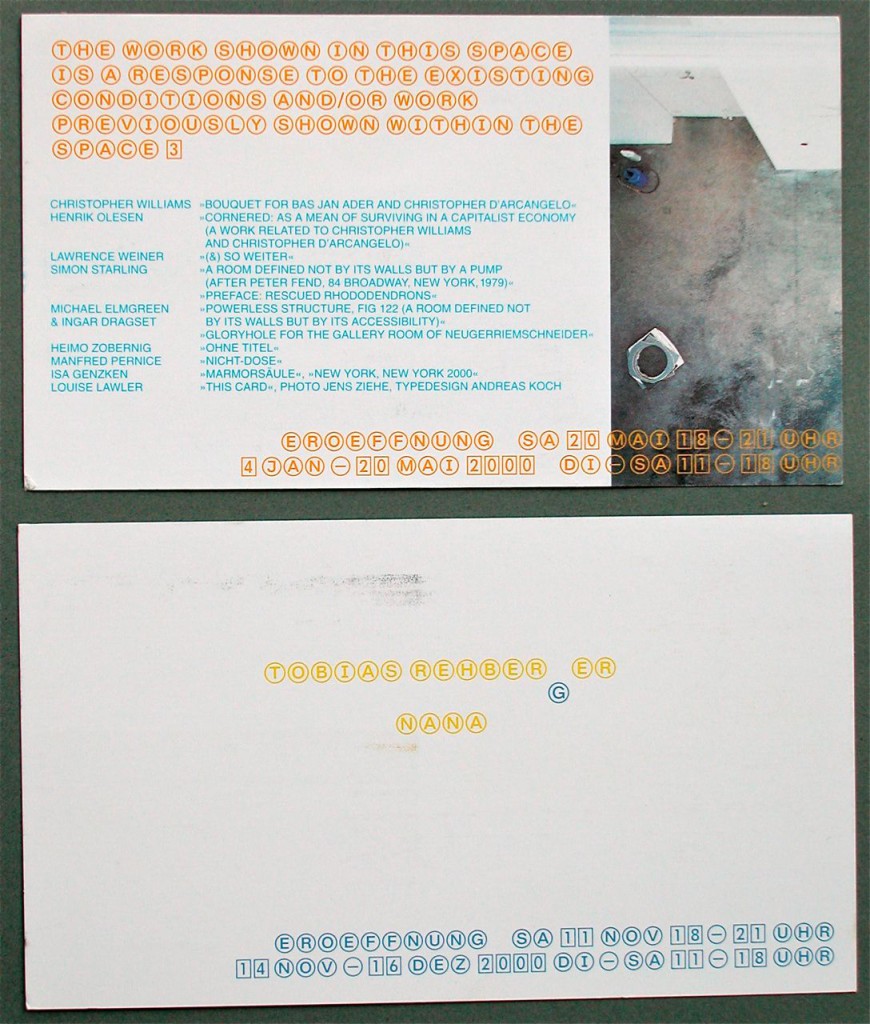
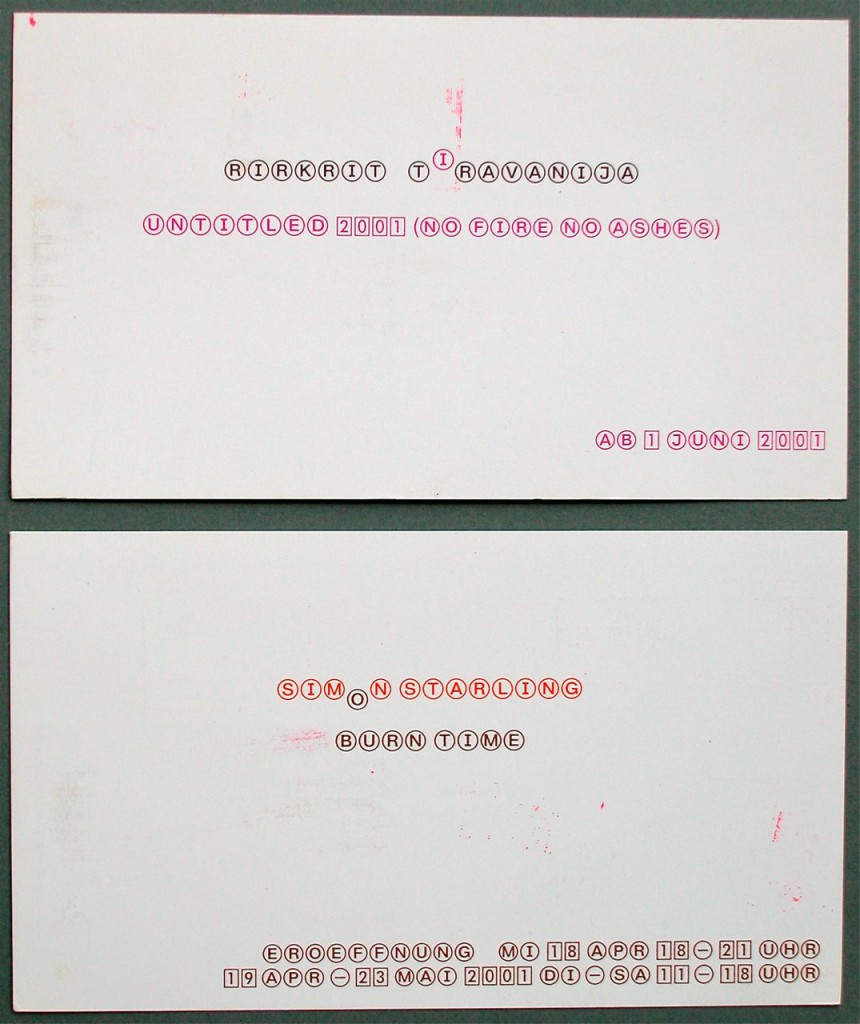
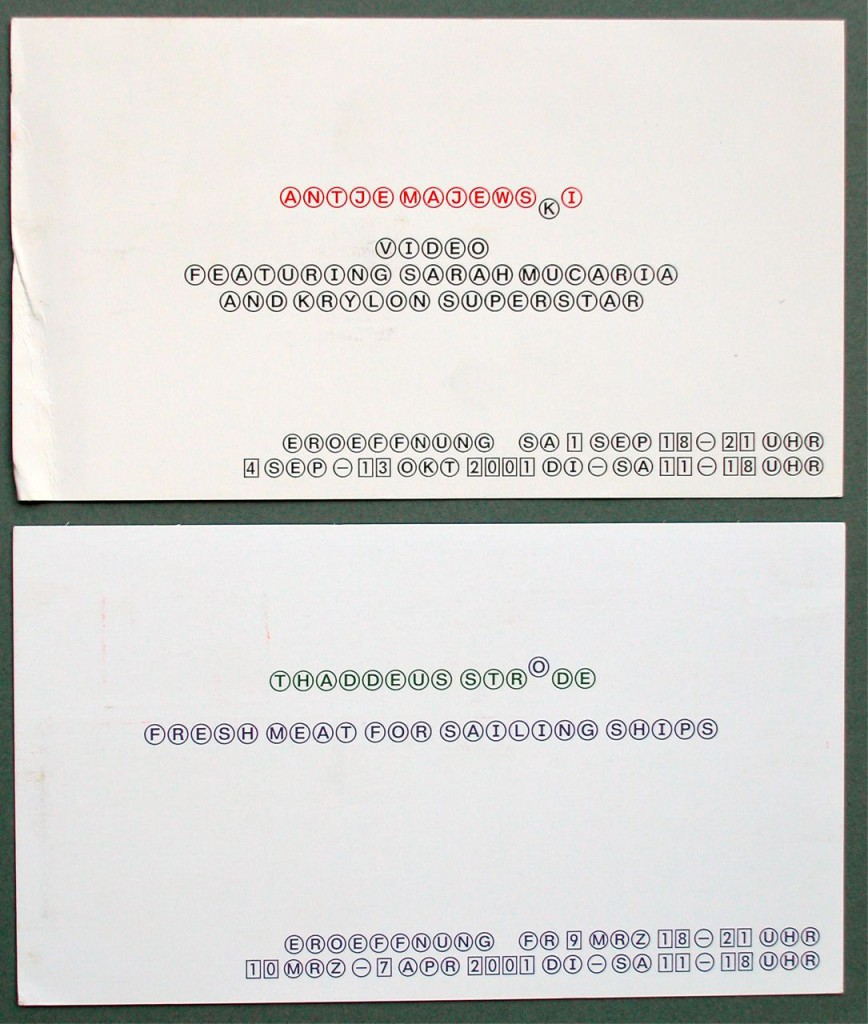
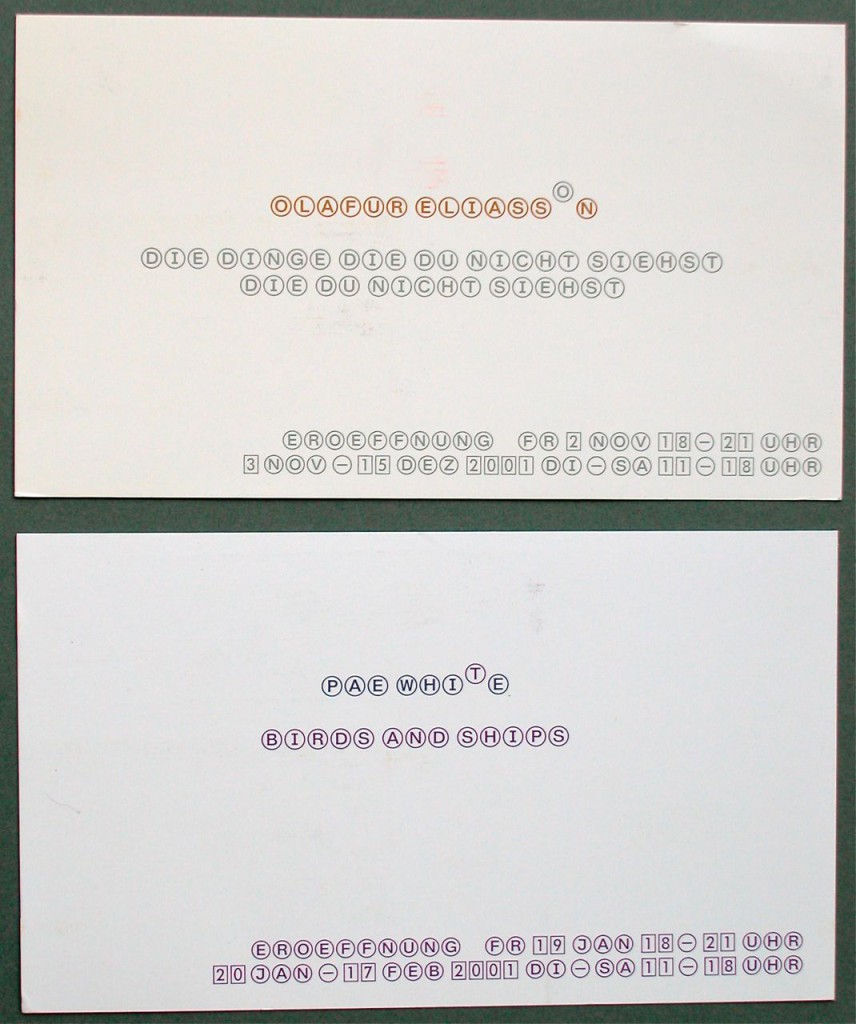
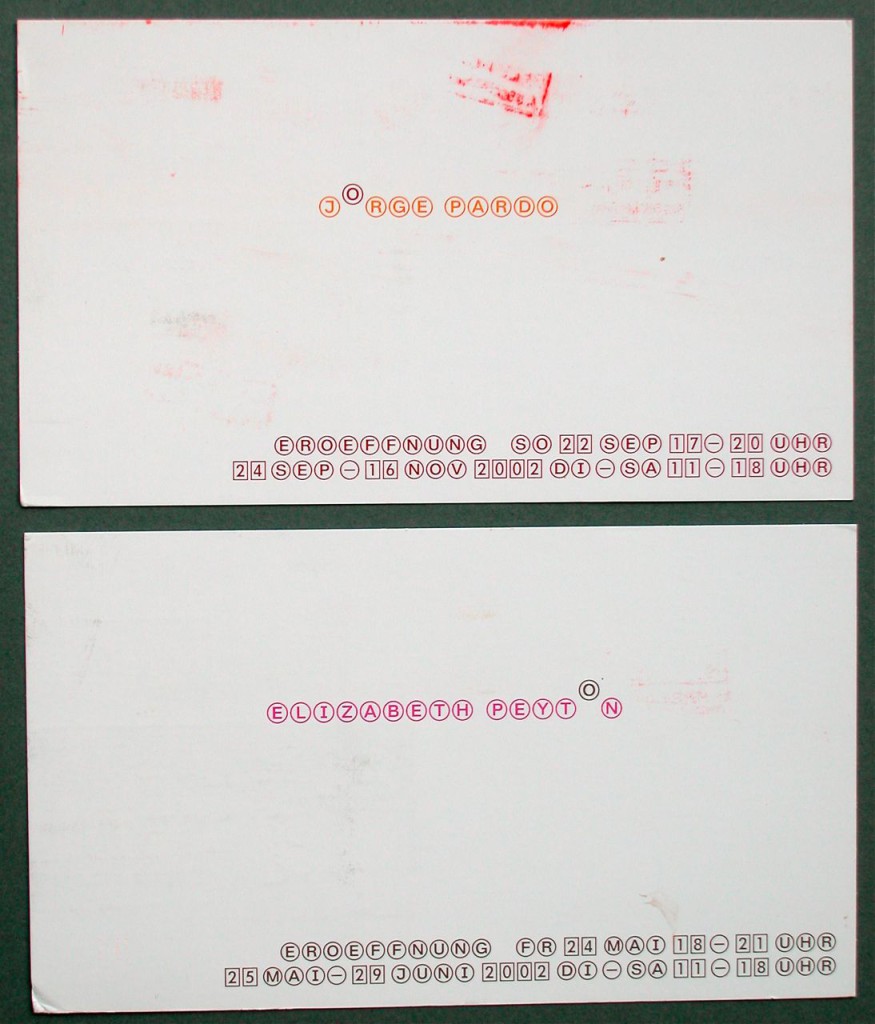
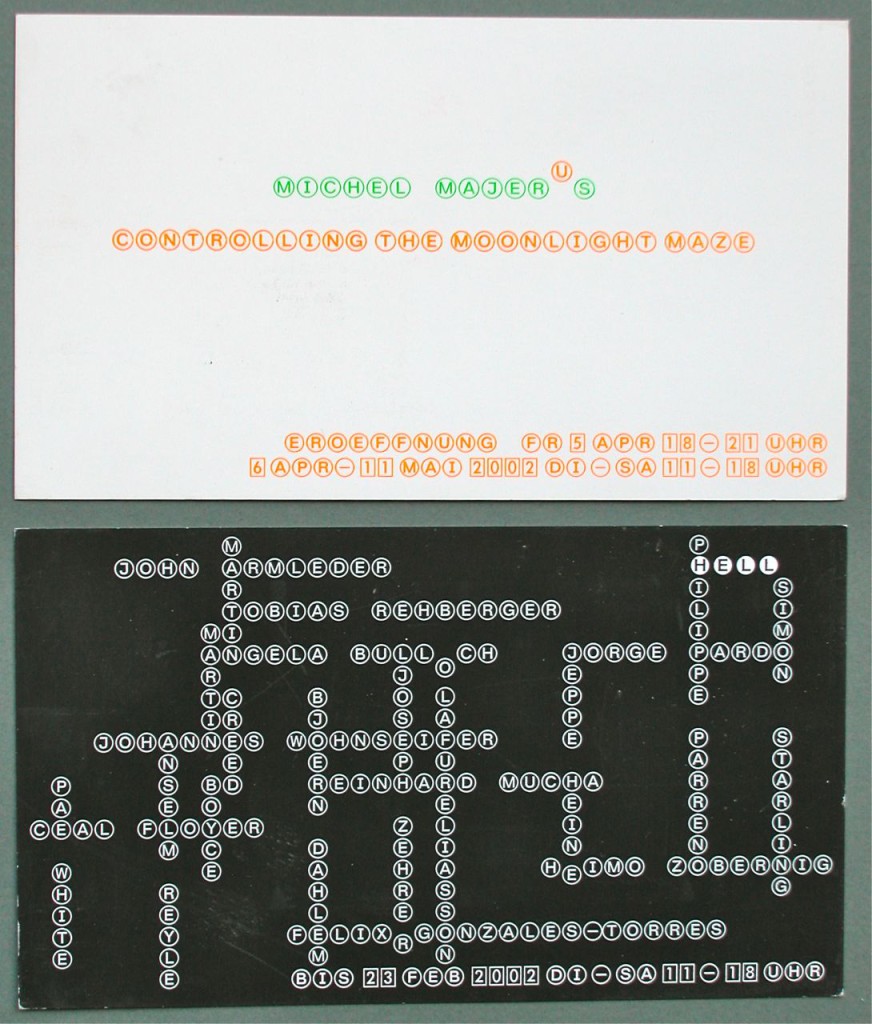
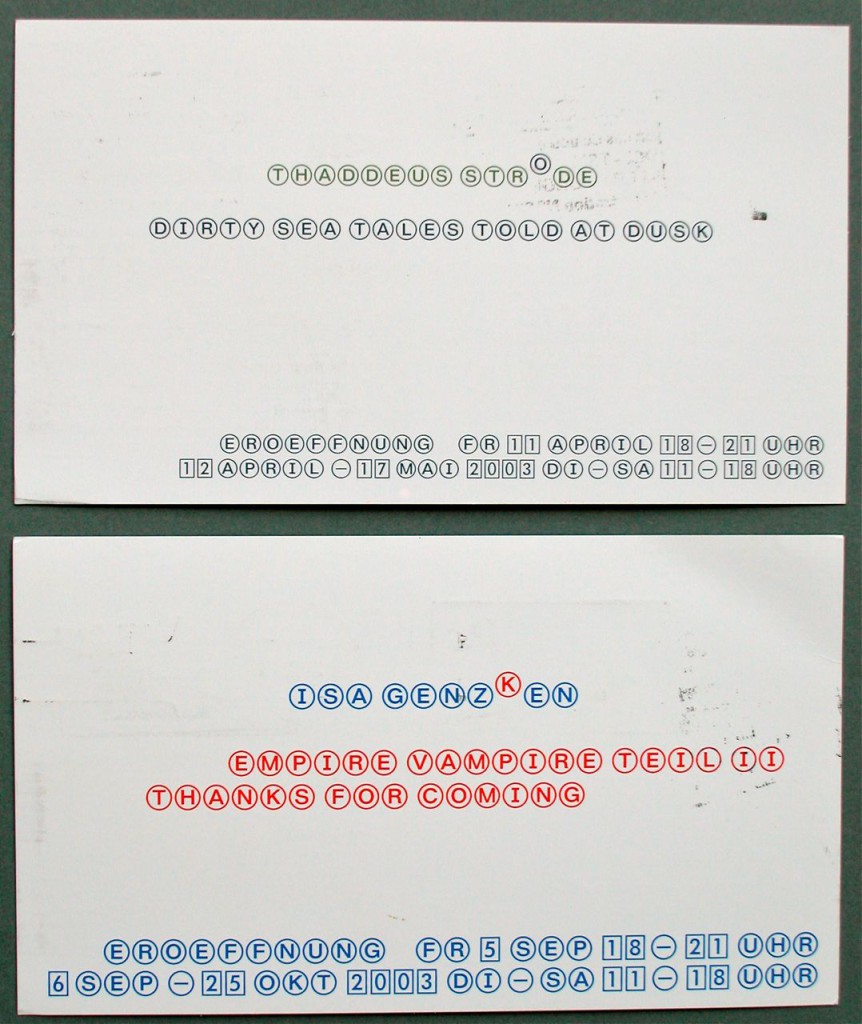
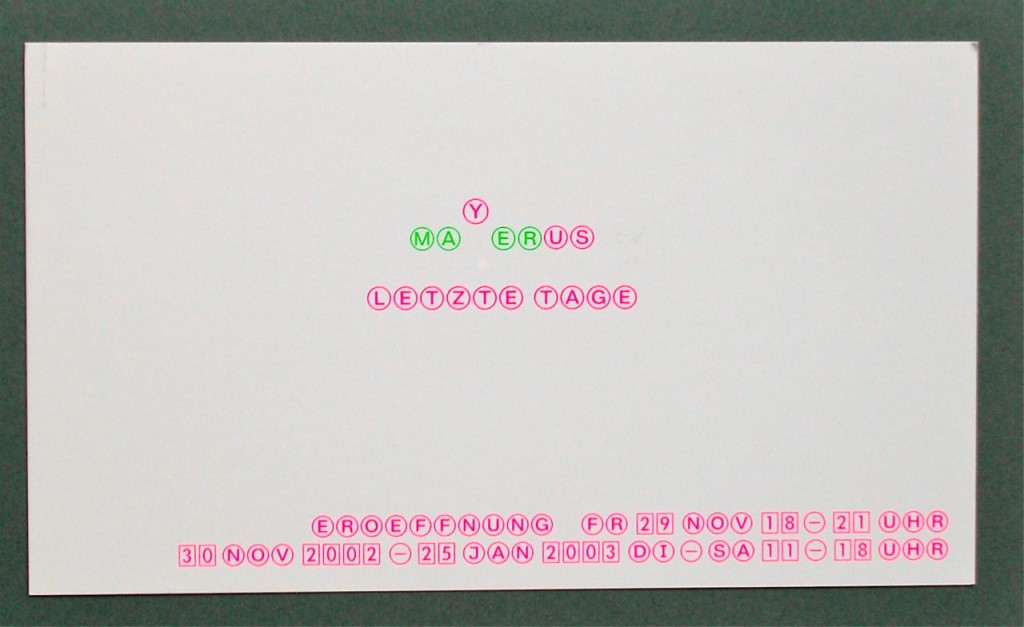
In 1994, Jorge Pardo (b. 1963, Havana, Cuba) designed the invitation cards for Berlin’s gallery neugerriemschneider. The design is still in use today, here some more examples.
Jorge Pardo is the key art/architecture cross-over artist of the current generation. Architectural elements such as walls, seating, lighting and circulation solutions are combined with ‘art’ elements such as murals, coloured glass and sculpture to create highly livable, elegant spaces. He combines modernist aesthetics and ‘form-follows-function’ dogma with his highly sensitive attention to colour, materials and texture to create his signature streamlined sculptures and built environments.
Havana-born, California-based Pardo is often called upon to ‘heal’ the uncomfortable spaces created by neglect all around us. Pardo looks at the unlivable spaces produced primarily by automobile-culture and consumer-culture, and creates unity and harmony through subtle architectural solutions. For example, he was invited to offer an aesthetic and utilitarian renovation of lobby, bookstore, and frst-floor gallery at New York’s Dia Centre.There, Pardo created an ebullient design for the 9,000-square-foot lobby and first-floor space, reconsidering the audience’s experience by smoothing circulation and enhancing visitor amenities. He infused the ground floor with natural and refracted light by means of a ceramic tiles in an exhilarating combination of sky blues, mustard yellows and lime greens. Pardo’s architectural work includes a pier for Sculpture Project Munster in 1997 (now permanent) as well as other commissions, including a cafe for the Leipzig Messe in Germany in 1996, and the renovation of the Fabric Workshop and Museum in Philadelphia. Recipient of the Smithsonian American Art Museum Lucelia Award, Pardo’s work has been internationally acclaimed in over 100 exhibitions and is featured in many museums’ collections, including the Museum of Modern Art (New York), Tate (London), the Museum of Contemporary Art (Los Angeles), and the Boijmans van Beuningen Museum (Rotterdam).In the interview, Lane Relyea discusses Pardo’s life and motivations, his move from Cuba to Chicago when he was a child, his desire to emancipate himself from the suburban emigre’ community, his school days at the Los Angeles Art Center, and his break in the art world. Christina Vegh’s survey examines the evolution of Pardo’s work from the early, minimal sculptural pieces through more space-concerned, less object-related installation, ultimately culminating in large-scale architectural work. Chris Kraus focuses on 4166 Seaview Lane, a house Pardo presented in 1998 in the context of a solo exhibition at the Museum of Contemporary Art in Los Angeles and where he now resides.
 follow
follow